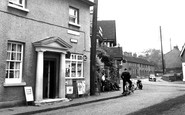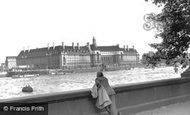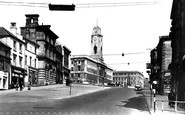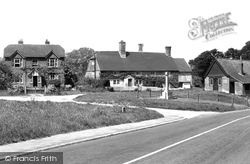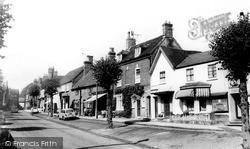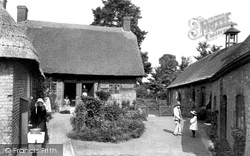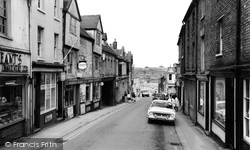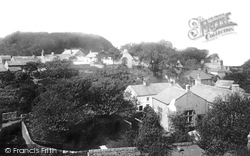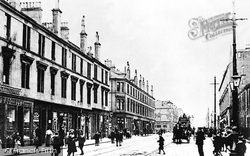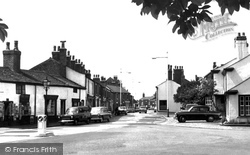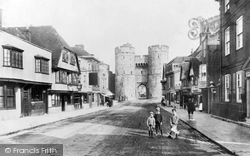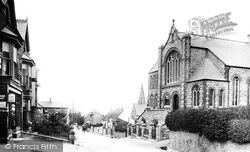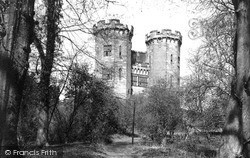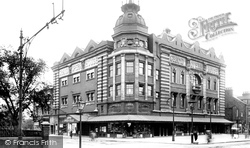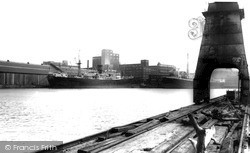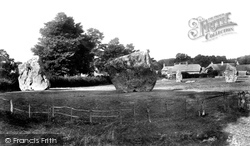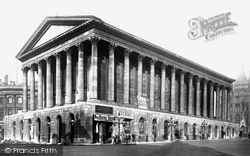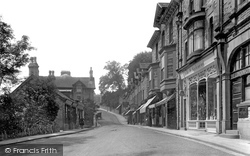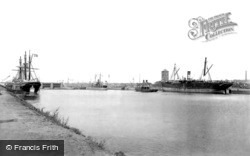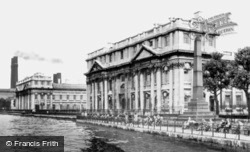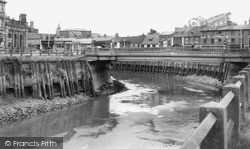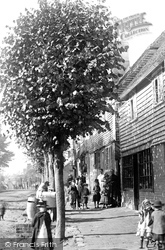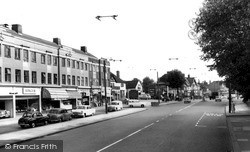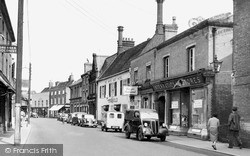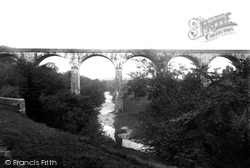Places
1 places found.
Those places high-lighted have photos. All locations may have maps, books and memories.
Photos
Sorry, no photos were found that related to your search.
Maps
22 maps found.
Books
1 books found. Showing results 289 to 1.
Memories
421 memories found. Showing results 121 to 130.
Happy Days Near Colliers End
My family bought property between Colliers End & High Cross - about 5 acres. My dad used to stop there for tea after having biked from London to Cambridge and stopped on his way back to London. The acreage ...Read more
A memory of Colliers End in 1930 by
Bank Top Garage
I joined the Bank Top Garage at Whickham, Bank Top, after being made redundant from George and Jobling. It was a bit run down and not what I was used too, but I thought I would get a wage so I would give it a shot. The main ...Read more
A memory of Whickham in 1973 by
Arthur Towle Lucan Old Mother Riley
Arthur Towle, (born Sibsey 1885) who became the actor Arthur Lucan, lived in a house in an alley called Woodyard near Craythorne Lane until he left Boston around 1901. His career began when he was about ten, ...Read more
A memory of Boston in 1900 by
Portmanmore Road Splott 1964 To 1965 Part Three
I really remember the fish & chip shop, the stuffed alligator; kids were scared of it apart from me. I also recall how nasty that short Greek woman from the fish & chip shop was. One early ...Read more
A memory of Splott in 1965 by
Great Haywood
My name was Mackin when I lived in Great Haywood in the 197'0s. We lived in Elm Close for over 5years. When I began to look through the photographs in the Frith Collection and saw the one above, it brought back memories that ...Read more
A memory of Great Haywood in 1970 by
First Step On The Ladder
My brother and his wife, having met at 14, got married at 20. My brother was an apprentice motor mechanic and his fiance a trainee hotel receptionist, so money was tight and they had no idea where they were going to live ...Read more
A memory of London in 1980 by
My Links To Cheslyn Hay
I was born in 'The Lot' on Cheslyn Hay in 1950. I have been able to trace my lineage back to the 1700's through the Brough, Horton and Cadman families. The Horton family lived in all or some of the cottages in Dundalk ...Read more
A memory of Cheslyn Hay by
I960s Mods And Northern Soul In Crowd In Bury
In the late 1960's I was a schoolgirl at the Derby School. When I began to be independent and join a tribe I chose the Northern Soul gang and sometimes I used to go to All Nighters, with my boyfriend and ...Read more
A memory of Bury
Paper Trail
Lundhill is a steep hill that leads into Royston, where the Monkton coking plant lies. Just at the side of Lundhill was Monkton Row, it was to be demolished in the 1980s. But before then a big flat bed lorry failed to take the corner ...Read more
A memory of Barnsley by
Claywood And The Teem Valley Home 1949 To 1969
How wonderful to hear of one of my dear friend's memories of 1960s Menith Wood. Although I was actually born at "Eardiston" Farm called Moor Farm, in one of the converted barns in 1949, I spent ...Read more
A memory of Menithwood in 1960 by
Captions
469 captions found. Showing results 289 to 312.
Friendly societies began here at the Five Bells Inn in 1782.The Heritage is a specialised health care institution for disabled children with buildings in several locations around the area.
In the 1120s de Clinton built Kenilworth's famous castle, which began life as a fairly basic motte and bailey.
St Margaret's began as a leper hospital, possibly founded by Robert Fitz-Parnell, himself a leper, whose brother Robert, Earl of Leicester, held Kingston Manor from 1190 to 1204.
Redevelopment of Daventry began in the early sixties under a scheme to house Birmingham overspill population.
In 1904, two thousand workmen began digging a deep water harbour which took an army of Irish navvies seven years to complete.
Situated on the Clyde, opposite the mouth of the River Cart, Clydebank was little more than farmland until 1871-72, when J & G Thomson began the construction of a shipyard.
As with other coastal locations, Church Town began to attract visitors wishing to take the sea-air and engage in a little sea-bathing; accommodation was offered by the village's two inns, the Griffin and
The cathedral was rebuilt in the 12th century, and began to assume the form we see it in today.
Its development from a little village straggling up a single high street began in 1870. However, it has an ancient lineage, and the Romans established a major settlement nearby.
In the early 19th century rebuilding began, but the project was abandoned before it was completed.
Imeson was one of the leading figures in the town's entertainment business; his involvement with the theatre began in 1866, when he started building the Royal Albert Theatre.
To offset this, other trades began to expand and diversify, and new factories opened. Wallasey Docks became the main grain importing area for Merseyside.
The site was extensively 'tidied' and serious archaeological work began. The Avebury we see today owes its survival to these excavations.
Work began in 1832, but the project ran into problems owing to a serious underestimate by the builders, who eventually went bankrupt.As the architects had agreed to underwrite the builders, they
The building is typical of the old coach-building businesses that became garages when motor cars began to replace horse power.
Its development as a holiday resort began with the coming of the railway, and most of the buildings here date from after that time. Note the first-floor bay windows.
Construction began in 1887.
The Royal Naval Hospital, a counterpart to the Chelsea Hospital for soldiers, began as a rebuild of Greenwich Palace by Charles II in the 1660s, but it changed direction in the 1690s.
It was not until the early 18th century that the benefits of the large-scale drainage schemes of the previous century began to be felt.
Sir Edward Goschen was British Ambassador in Berlin in 1914 when the war began. Seacox Park has a magnificent collection of trees and shrubs.
It would be difficult to say now, without consulting early maps, exactly where 18th-century Whetstone began and finished on the Great North Road.
The gabled HSBC next door began as the London and Provincial Bank in 1908. The shop with awnings was Alex Martin's, a draper's.
On 18 July 1844 the London and North Western Railway Company began work to extend the railway from Lancaster to Carlisle.
As with other coastal locations, Church Town began to attract visitors wishing to take the sea-air and engage in a little sea-bathing; accommodation was offered by the village's two inns, the Griffin
Places (1)
Photos (0)
Memories (421)
Books (1)
Maps (22)

